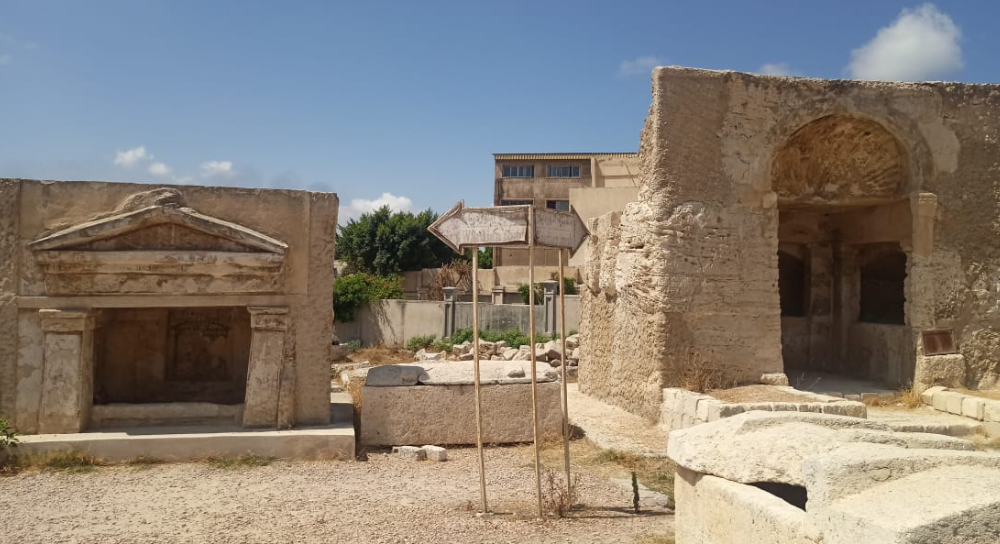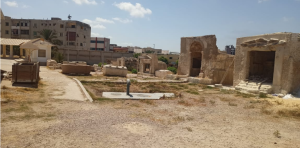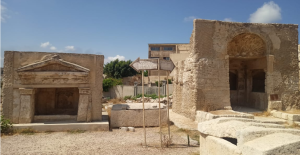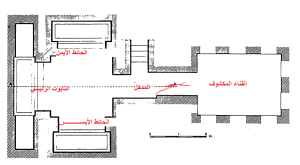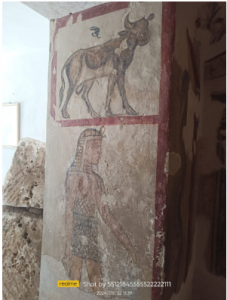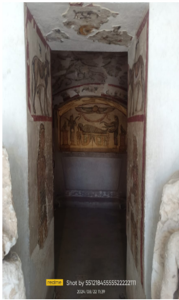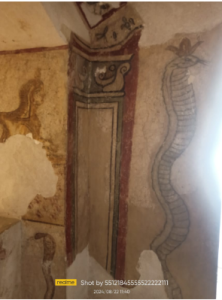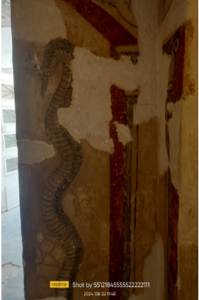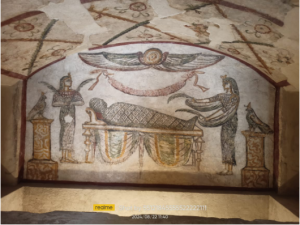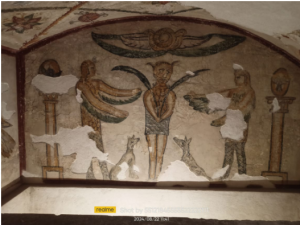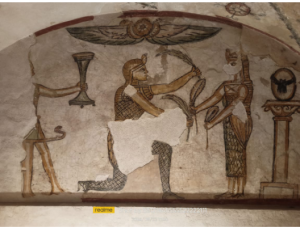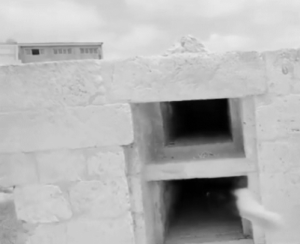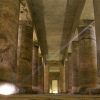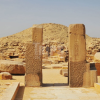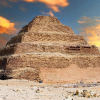Wardian tombs
Discovered in 1953 AD in the Wardian district of Alexandria, it was rediscovered by Boucoc and Norden, and again in 1799 AD by French expeditionary scientists. Considered one of the oldest and most complex Roman tombs, it dates back to 300 BC. It was exhibited for a period in the garden of the Greco-Roman Museum before being restored and moved to the Kom el Shoqafa area.
Description of the Tomb
Consisting of two tombs carved into the rock in the form of chamber tombs, the first tomb is entered through a square hall with a shell-shaped facade and a vaulted ceiling. Inside, there are three sarcophagi, and the ceiling is supported by four Doric columns. The tomb is devoid of decorations. The second tomb is entered through a colonnade, and the ceiling has a gable shape supported by two columns with simple decorations. On one side of a column, we find Anubis in Greek clothing, and Eros, the god of love and son of Aphrodite, is depicted on the front of the column as a winged child. Inside, there is a decoration in the form of an Egyptian sarcophagus and a figure of a goddess, possibly Isis or Aphrodite.
Pictures of the Wardian tomb
Pictures of the Wardian tomb
The inference of Tigran Tombs
The tomb was discovered on Tigran Pasha Street (currently Port Said Street), hence its name. The site was discovered by chance in 1952 when excavations were being carried out for the foundation of a new building. To preserve it, the tomb was moved to the Kom el Shoqafa catacombs. It dates back to the 2nd century AD.
Tigran Tombs Description
Description of the Tomb
The tomb consists of a chamber containing three painted sarcophagi. The entrance is divided into two parts. In the upper part, we find the Apis bull, while in the lower part, there is a figure of an unknown person dressed in Egyptian clothing, above his head is the Nemes and below he wears a royal kilt. Additionally, we find elements designed to protect the tomb from thieves, such as agathodaemons (protective spirits) depicted as snakes on either side of the entrance, the head of Medusa on the ceiling, and surrounding decorations featuring animal and plant motifs.
The entrance of Tigran Tomb
The entrance of Tigran Tomb
head of Medusa on the tomb’s ceiling
The Main Sarcophagus
The sarcophagus depicts a painted scene representing the deceased preserved in the Osirian manner on a funerary bed. On either side of the deceased stand the goddesses Isis and Nephthys, offering branches of palm to the deceased. Behind each goddess stands a bird wearing the double crown of Upper and Lower Egypt, standing above a decorated altar. Above the main scene, there is the winged solar disk surrounded by two serpents, and below, there is a decorative wreath with ribbons on either side. On the sides of the chamber, we see Anubis seated. The entire scene may depict the resurrection of Osiris through Isis offering the palm branch, and the bird above the altar representing their son, the god Horus.
The Main Sarcophagus
The Sarcophagus on the North Side of the Chamber
This sarcophagus depicts Osiris in his deified form, standing in the center of the scene. He holds two palm branches and wears a crown in the shape of horns. To the right of Osiris stands his son Horus, with outstretched wings, extending his hands towards his father in the same manner as Isis who stands to the left of Osiris. Two dogs surrounding Horus represent the god Anubis. In the corners, we find a support in the form of a Corinthian column, topped by an egg symbolizing eternity.
The Sarcophagus on the North Side of the Chamber
The Sarcophagus on the North Side of the Chamber
This sarcophagus depicts Osiris in the center of the scene, offering a palm branch to Isis. Behind him stands Horus, holding a scepter. Above the scene, there is the winged solar disk, and on the side, there is a column topped by an egg.
The Sarcophagus on the Right Side of the Chamber
The Salvagio Tomb
The tomb is attributed to a Greek named Salvagio, who owned the land where the tomb was discovered. To preserve the tomb, it was relocated and reconstructed in the Kom el Shoqafa area. This tomb is considered one of the most important discoveries in the Salvagio necropolis, located in the third region of Lower Egypt. The necropolis is known as the necropolis of the priest Pas. The owner of the tomb is a man named Pas, whose occupation was “manager of houses.” He also held the priestly title of “bearer of the sacred eye.” A scarab was also found in the tomb, with a deep inscription of religious texts and the name and occupation of the tomb owner.

